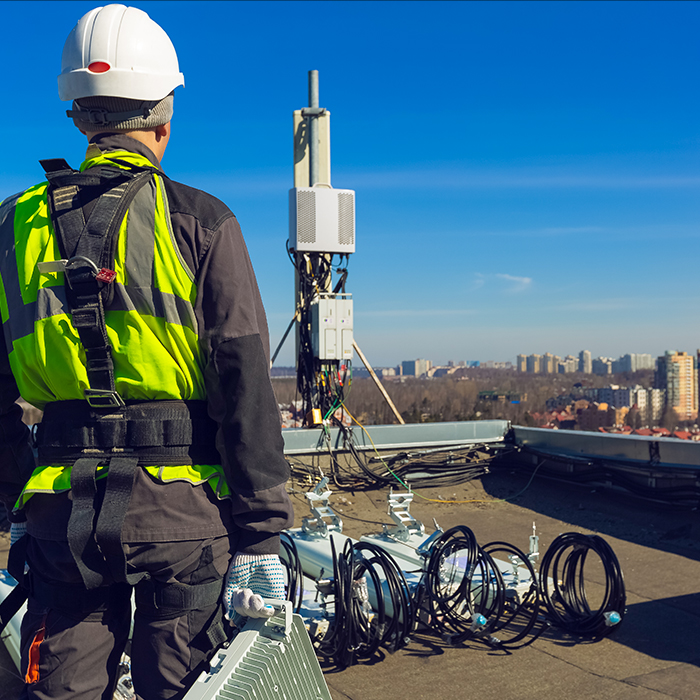Coronavirus lockdown causes surge in broadband traffic around the world

Telecoms infrastructure investment will become a post-Covid priority
As the coronavirus spreads around the world, it’s the same story everywhere. In March, BT in the United Kingdom reported a 35% to 60% increase in daytime weekday fixed broadband usage, the report said. In Italy, Telecom Italia saw traffic increase of 63% and 36% in the fixed and mobile network, respectively. In the United States, Verizon reported a 47% increase in use of collaboration tools and a 52% increase of virtual private network traffic.
“A large telecommunication operator serving several OECD countries reports nearly 40% more bandwidth, with mobile traffic growth of 50% and 25% in voice and data, respectively,” said the OECD.

“Almost everyone by now has understood the importance of a high speed optical fibre backbone for a network. The real target now for fast internet is fiber to the home. I believe operators will push to connect more homes with optical fibre in anticipation of a demand that should grow after the crisis, causing investment on the ‘last mile’ to recover strongly.”

Philippe Vanhille
Prysmian Group Telecom EVP
Optical fibre connections are far from ubiquitous, according to 2019 figures from the OECD, indicating that most markets have ample room to grow. Out of total broadband connections in the developed world, an average of 26% were to fibre subscribers. South Korea and Japan stood out with 82% and 79% respectively. In Europe, Lithuania and Sweden were at the top, with 75% and 69%. The U.S. and Canada were near the bottom of the chart with 15% of fibre connections.
Consultancy firm Analysys Mason sees a strong rebound in fibre-to-the-premises (FTTP) capex by the end of 2020 and into 2021, with spending accelerating as operators benefit from the low cost of capital and some stimulus, and redouble on 'safer' long-term investment.
“In 2021, we expect FTTP spend to be 12% ahead of what we had previously forecast, in part catching up on time lost in 2020,” the telecoms specialist consultancy wrote on April 15.
The demand for more high quality broadband capacity was already evident before the Covid-19 pandemic because it is needed to support the rollout of 5G. Vanhille predicts that trend for digitalization to accelerate, now that the pandemic has highlighted just how essential it is for both work and home (and how the distinction between work and home has become blurred).
“These months at home completely depending on IT and telecoms operators will make people a lot more open and interested to find solutions to digitalize their work processes,” he says. “And I think this experience will be an accelerator for small companies that are now in a tight spot because they have physical equipment that becomes a barrier.”
“Moreover, in their rush to deliver digital services in this new, highly demanding environment, telecoms operators will need to avoid ‘quick and cheap’ shortcuts and invest in a robust and reliable cable infrastructure capable of supporting the coming waves of innovation, now and for the next 20 to 30 years. The underlying network must be absolutely rock solid – avoiding blackouts and breakdowns. A high-quality passive infrastructure may cost more up front, but it will reduce operational costs for maintaining and upgrading the network in the long term. Telecoms incumbents and newcos must all upgrade their offer in terms of speed and added services. But not all of them understand how the choices they make in passive network infrastructure can create massive differences in service.”
Prysmian Group has been investing for many years in improving manufacturing capabilities and product innovation, so that it can offer its customers increasingly robust products that are smaller and easier to install, leading to a faster roll-out execution, and resulting in important capex savings on installation which can run to 50% of the cost of a new network. This is reflected on the most recent product innovations launched from Prysmian on the market.
Just to name a few: BendBrightXS 180µm, is the world’s first bend insensitive single-mode optical fibre with 180µm outer diameter that will enable new cable systems with extreme fibre density and smaller diameter. Sirocco Extreme is the world’s smallest and densest fibre optical cable, which can pack 288 fibres in a diameter of just 6.5 millemeters , launched by Prysmian Group on April 21.

“We are ready for a telecom world that needs to install more high quality fibre to delivery services. And we have the right products to absorb a rebound in the market if that happens. And I hope it does.”

Philippe Vanhille
Prysmian Group Telecom EVP







